Social enterprises have the potential to address the key concerns at the back end and front end of agri value chains. In this blog, Dr Tripathy and Dr Wadkar explain the conceptual understanding of social enterprises and talks of cooperatives, SHGs, and farmer producers companies as a form of social enterprise in agriculture. They also describe the challenges and implications for extension professionals and how to remain up-to-date and relevant in the growing agribusiness space.
CONTEXT
In the current rapidly changing economic, environmental, social and political arena, there is a need for innovative solutions for addressing the key concerns of sustainable development. In this context, social entrepreneurs are providing solutions to achieve poverty reduction and enhance sustainable livelihoods opportunities by promoting entrepreneurship in varied sectors. Traditionally, business organizations have been classified as ‘for-profit’ and ‘not-for-profit’, wherein the former focuses on commercial activities for maximizing profits and the latter on facilitating development to achieve socio-economic and welfare activities. However, in recent decades, a hybrid form of organizations called ‘Social Enterprises’ (SE) is gaining importance.
SOCIAL ENTERPRISES
There is no standard definition of a social enterprise. It varies, and is influenced by situations, structural and institutional forms. It is widely known as an organization that undertakes a businesslike strategy to achieve a social mission and keeps an eye on income generating opportunities for sustainable financing in their business operations in order to solve rooted social or environmental problems (Arena et al. 2014; Barraket & Yousefpour 2013; Ebrahim & Rangan 2014; Grieco et al. 2015; Haugh 2005; Katre & Salipante 2012; Luke 2016; Perrini et al. 2010; Yusuf & Sloan 2015). Currently, any form of organization that works for the attainment of any social concerns and creates social values which demands business and market orientation and entrepreneurial qualities is considered to be a ‘Social Enterprise’.
ORGANIZATIONAL FORMS: SOCIAL ENTERPRISE SPECTRUM
There is a difference of opinion in terms of organisational forms/legal status by which the social mission can be pursued, i.e., for-profit or not-for-profit entities. In addition, some researchers say that (social) innovation and technology is at the core of social enterprise, irrespective of being for/not-for-profit. The social enterprise spectrum given by Dees (1996) differentiates between the ‘purely-philanthropic’ non-profit entity, ‘in-between’ social enterprise, and a ‘purely commercial’ for-profit organization/entity.
The European Research Network has developed the first theoretical framework based on the empirical analysis of different social enterprises that includes nine indicators, which are categorized into three dimensions, viz., (a) economic and entrepreneurial dimensions; (b) social dimensions; and (c) participatory governance of social enterprises, as highlighted in Figure 1. These indicators show that community-based and community-driven enterprises supported by promoting institutions[1] and/or self-promoted, strive for achieving socio-economic, cultural and aspirational needs of their respective members. This requires a high degree of autonomy in governing and managing the member-controlled organization.
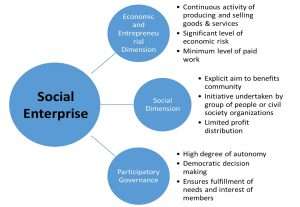 Figure 1: Dimension and indicators for defining social enterprises
Figure 1: Dimension and indicators for defining social enterprises
(Source: Adapted from Defourny & Nyssens 2012)
SOCIAL ENTERPRISES IN AGRICULTURE IN INDIA: TYPES AND STATUS
In the case of agriculture, including the allied sector, there are different types of informal groups, which vary according to the nature of scheme, programmes, situation and promoting institutions, such as livelihood collectives, farmers’ groups/organizations/associations, farmer/commodity interest groups, self-help groups, joint liability groups, etc. The most formal type of group i.e., cooperatives, Cluster Level Federations (CLFs) of Self-Help Groups (SHGs) and Farmer Producers Companies (FPCs), conceptually now called as ‘Farmer Producers Organizations’ (FPOs) can be classified as ‘Social Enterprise’. Tripathy et al. (2020) highlighted in detail the emergence, status, challenges of these formal types of producer collectives and the way forward for making them competitive and sustainable. The objective is to streamline backward and forward linkages of the agri-value chains. The difference lies in the regulatory structure that governs and manages these forms of social enterprises, but most of these social enterprises are struggling to achieve the purpose of their existence. Figure 2 highlights the structure, status and broader roles of these social enterprises.
Cooperative form of social enterprise
There are many success stories of social enterprises in agriculture, but most are not adequately documented. The cooperative movement started in 1904 as a Credit Cooperatives Society Act, and for non-credit cooperative societies in 1912. After India’s independence, cooperatives have played a crucial role as a vehicle for the implementation of welfare schemes and programmes in order to achieve the socio-economic transformation of people in independent India. Unfortunately, only the dairy, sugarcane and inputs sector could develop an end-to-end value chain but other forms of cooperatives lost the intent of their existence due to various reasons. Over a period of time, the cooperative movement itself got trapped between the nexus of political parties on one side and bureaucracy on the other.
The AMUL model has evolved over a period of time under the umbrella of Gujarat Cooperative Milk and Milk Marketing Federation (GCMMF), and developed certain ‘standardizations’ in their business operations, horizontally and vertically ‘scaled-up’ and ensured ‘skilling’ to their member farmers and also inculcated the qualities of ‘democratic governance’ and ‘professional management’. Thus, during the Operation Flood Programme, the AMUL model got replicated pan-India, which has resulted in state-specific milk brands such as Nandini in Karnataka, Aavin in Tamilnadu, Milma in Kerala, Sudha in Bihar, Sanchi in Madhya Pradesh, Verka in Punjab, etc. However, this sector is facing operational challenges, which needs immediate attention.
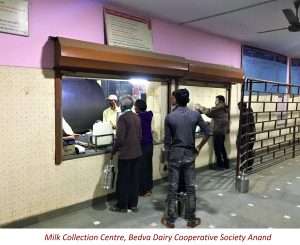 AESA Blog 102 highlights the journey of the dairy cooperative movement, its key impediments, and the way forward from dairy extension professionals’ point of view. Similarly, IFFCO and KRIBHCO, the agri-input sector cooperatives have diversified their portfolio and ensured professionalism in their business operations. The Primary Agricultural Credit Cooperative Society, commonly known as PACS, the ‘bottom-of-the-pyramid’ of the cooperative institutions, that are mostly into lending crop loans, has potential to diversify their business operations. The Government of India, including state governments has been struggling to orient and convert these PACS into ‘multi-service centres’.
AESA Blog 102 highlights the journey of the dairy cooperative movement, its key impediments, and the way forward from dairy extension professionals’ point of view. Similarly, IFFCO and KRIBHCO, the agri-input sector cooperatives have diversified their portfolio and ensured professionalism in their business operations. The Primary Agricultural Credit Cooperative Society, commonly known as PACS, the ‘bottom-of-the-pyramid’ of the cooperative institutions, that are mostly into lending crop loans, has potential to diversify their business operations. The Government of India, including state governments has been struggling to orient and convert these PACS into ‘multi-service centres’.
With the announcement of the New Ministry of Cooperation, renewed interest has been put on the cooperative model with the hope of infusing a lot of investment into the sector, research and development on the structural and legal issues, autonomy and independence, inculcating professionalism, and so on.
Figure 2: Social enterprises in agriculture
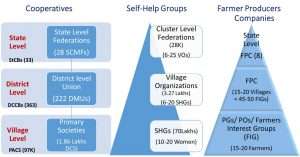
| Structure | Mostly Federal and Unitary (in case of Urban Coops Banks, Sugarcane Coops) | Federal | Unitary |
| Regulation | Registrar of Cooperative Society (RCS) and Central Registrar (in case of multi-state coops society), Ministry of Agriculture & Farmers Welfare (in transition, Ministry of Cooperation) | State Rural Livelihood Missions (SRLMs), Ministry of Rural Development; CLFs are now being registered under State Coops Society Act | Registrar of Companies (RoC), Ministry of Corporate Affairs |
| Numbers | 8.5 lakhs; Credit coops: 20% having 80% membership; and Non-credit coops: 80% with only 20% membership | 70 lakhs SHGs federated as 3.27 lakhs VOs and 28,000 CLFs | Around 8700 FPCs and eight state level Federation of FPCs |
| Roles | Credit coops: Refinancing to secondary and primary tiers.
Producers Coops: Advisory, Aggregation, Processing and Marketing at different levels (varies according to types of coops and state) |
Primarily refinancing to VOs and SHGs. However, CLFs should diversify and function as ‘multi-service centre’ for long-term sustainability | Advisory, Aggregation, Processing, Market linkages and Distribution |
| Objective | To address the needs and interests of members. At the front end it aims to increase producer members’ share in the consumers’ rupee, and minimize post-harvest losses, whereas at the back end, it reduces the cost of production and improves productivity. | ||
SHGs as a form of social enterprise
In order to achieve gender equality the Government of India has carved out several policies and programmes. In doing so, during the last three decades, the SHG movement has been a revolutionary approach in India. In the first phase (1984 – 2011), the focus was on promotion of SHGs and inculcating a ‘thrift & savings’ behaviour among women members of SHGs. In the second phase (2012-13 onwards) i.e., during the ongoing DAY-NRLM scheme of the Ministry of Rural Development, the focus is on scaling-up and institutionalization of SHGs across various States in India. The objective is to reduce poverty by enabling poor households to access gainful self-employment and skilled wage employment opportunities, resulting in an appreciable improvement in their livelihoods on a sustainable basis, through building strong grassroots institutions for the poor.
However, in order to sustain this movement and to make them competitive, there is a need for building a robust and stable community structure that is scalable across states. This requires robust institution building and a legal identity for the existing CLFs. This also calls for careful planning and contemplation. Most of the State Rural Livelihood Missions (SRLMs) are in a phase of transitioning and are considering the suitability of specific Acts to support the three-tier structure of SHG federations. Only a few states have done trial and error by registering it as ‘not-for profit’ entities under the Societies Registration Act 1860, and as ‘for-profit’ under respective state’s Cooperative Society Act – for e.g., in Andhra Pradesh, Bihar, Madhya Pradesh, Odisha, Telangana, West Bengal, etc.
Furthermore, many income generating activities were initiated largely at an individual level and/or SHG level by availing refinance facilities from their respective CLFs. However, very few efforts were made on streamlining these income generating/business activities at the CLF level. These micro-entrepreneurs are struggling to streamline the back end and front end of their respective products’ value chain. There is a need to federate these non-credit (on and off-farm livelihoods) activities at the CLFs level in order to address the members’ socio-economic and aspirational needs.
Moreover, NRLM/SRLM promotes parallel structure of women ‘Producers Groups’ (PGs) which are federated into Women Farmers Producers Company (44 pan India, as in January 2021). This may create governance and accountability issues in the near future with respect to their parent SHGs’ organization. Today, most of the SRLMs are trying to address the following pertinent questions in terms of the scalability and sustainability of CLFs.
- SHGs and VOs are informal bodies, so how do we want to see CLFs? Is it as ‘Not For Profit’ or ‘For-Profit’ legal entities?
a. How far are CLFs capable of governing and managing any form of legal entity?
b. How far could the Cooperative Society Act be the best option to take care of socio-economic, cultural and aspirational needs of women members? - What should be the role of CLFs – is it only for refinancing VOs/SHGs or to act as a multi-purpose vehicle? If yes, how can CLFs diversify their credit and non-credit business?
- What are the suitable business activities that can be undertaken by the registered CLFs?
- How best can CLF act as an umbrella institution to bring about inclusive and holistic development of their members?
- What would be the role of registered CLFs vis-à-vis other forms of Farmer Producers Organizations (i.e., Cooperatives Societies and Farmer Producers’ Company)?
- How are ‘Women Producers Groups’ (PGs) and their federated ‘Women Farmers Producers’ Companies’ working in tandem with their respective parent SHG organizations?
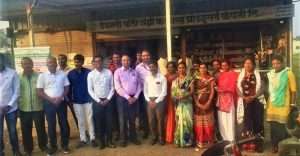 Board of Directors of Farmer Producers Companies across Maharashtra on an exposure visit to Devnadi Valley Agro FPC, Nashik
Board of Directors of Farmer Producers Companies across Maharashtra on an exposure visit to Devnadi Valley Agro FPC, Nashik
Farmer Producers’ Company as a form of social enterprise
It is a hybrid form of an organization which is based on the principles of cooperatives and corporates. As part of the multi-pronged approach the Government of India has conceptually defined all forms of producers’ collectives as FPOs, and created a renewed interest in the collectives’ movement in order to overcome the structural issues of the cooperative model and also infused professionalism and business orientation into it. As of now, more than 8700 FPOs have been registered under the Producers’ Company & Cooperative Act, section 8 company act, society act, and trust. Furthermore, this FPO movement also got an impetus with the launch of the Central Sector Scheme on the Promotion and Formation of New 10,000 FPOs across the country – both under cooperative and Producers’ Company Act. As of now the movement is still in the nascent stage and the focus is on creating social capital rather than on making them competitive and sustainable. The following issues need immediate attention:
- How do the FPOs perform in mobilizing membership and ensuring systematic production and procurement from their members as well as non-members/potential members?
- What is the extent of technology use and package of practices adoption for improving productivity and producing quality outputs at a reasonable cost?
- How can FPOs undertake business activities in view of seasonality and variability of the agri production system and what is the extent of technology usage for processing?
- To what extent are FPOs able to establish marketing connections – B2B or B2C through various channels – online and offline?
- How competent are the board of directors of FPOs in handling business enterprise and having competitive business strategies?
- Up to what extent has proactive decision making been in the interest of members and not gotten influenced by external stakeholders?
- How far are the issues of governance and management, business and operation management systems, and members and consumers centricity being addressed to ensure members’ belongingness and ownership towards their own FPOs?
IMPLICATIONS FOR AGRICULTURAL EXTENSION PROFESSIONALS
Social enterprises in agriculture are an appropriate vehicle for providing and extending advisory services to the last mile. Extension professionals need to understand the nitty-gritty of these social enterprises models and need to play a pivotal role in facilitating the sustainable development of these social institutions and making them competitive. In doing so, it needs to involve in activities such as sensitization and social mobilization of farming communities, entrepreneurial orientation, commodity specific value-chain analysis, developing a business plan, financial management, connecting them with relevant agribusiness actors including financial institutions and research institutions, for establishing backward and forward linkages, etc., and thereby generating better economic, social and environmental results for member farmers, FPOs, society and the nation. Some of the ICAR institutions and Krishi Vigyan Kendras in India are already helping in initiating and handholding FPOs (For details, kindly see AESA Good Practices: (a) KVKs in support of producer companies, November 16 2019; (b) Mentoring Farmer Producer Companies by Krishi Vigyan Kendras, October 18 2018 and (c) COVID-19 Field Notes 2 – KVK Kodagu and Puthari FPO coming to the aid of farmers during the lockdown, April 10 2020).
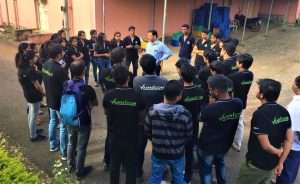 Agribusiness Management students interacting with Dr Rajiv Kale at the ICAR-Directorate of Onion and Garlic Research, Pune
Agribusiness Management students interacting with Dr Rajiv Kale at the ICAR-Directorate of Onion and Garlic Research, Pune
The agribusiness space is changing rapidly. Thus, it is high time to update and adapt to the overall development scenario, which demands innovations in extension and advisory services (EAS) systems. This also requires development of new skill sets to support producers more holistically. Thus the EAS system needs structural transformation and reforms in the way it is being perceived and practiced in order to build a resilient agri-food system.
References
Arena M, Azzone G and Bengo I. 2014. Performance measurement for social enterprises. VOLUNTAS: International Journal of Voluntary Nonprofit Organizations 26(2):649-672.
Barraket J and Yousefpour N. 2013. Evaluation and social impact measurement amongst small to medium social enterprises: Process, purpose and value. Australian Journal of Public Administration 72(4):447-458.
Defourny Jacques and Nyssens M. 2014. The EMES approach of social enterprise in a comparative perspective. WP no. 12/03. EMES European Research Network, Belgium.
Ebrahim A and Rangan VK. 2014. What impact? A framework for measuring the scale and scope of social performance. California Management Review 56(3):118-141.
Grieco C, Michelini L and Iasevoli G. 2015. Measuring value creation in social enterprises: A cluster analysis of social impact assessment models. Nonprofit and Voluntary Sector Quarterly 44(6):1173-1193.
Haugh H. 2005. A research agenda for social entrepreneurship. Social Enterprise Journal 1(1):1-12.
Katre A and Salipante P. 2012. Start-up social ventures: Blending fine-grained behaviors from two institutions for entrepreneurial success. Entrepreneurship Theory and Practice 36(5):967-994.
Luke BG. 2016. Measuring and reporting on social performance: From numbers and narratives to a useful reporting framework for social enterprises. Social and Environmental Accountability Journal 36(2):103-123.
Perrini F, Vurro C and Contanzo LA. 2010. A process-based view of social entrepreneurship: From opportunity identification to scaling-up social change in the case of San Patrignano. Entrepreneurship & Regional Development 22(6):515-534.
Tripathy KK, Deshpande DV, Wadkar SK and Lokhande J. 2020. Catalyzing development through collectives: Status and issues of Cooperatives, SHGs and Farmer Producers Organizations in India. VAMNICOM Working Paper Number 3, 2(1):1-42. ISSN: 0302-7767.
Yusuf JE and Sloan MF. 2015. Effectual processes in nonprofit start-ups and social entrepreneurship: An illustrated discussion of a novel decision-making approach. American Review of Public Administration 45(4):417-435.
Foot Notes:
[1]The promoting institutions could be public (central and state government and their developmental agencies), or private (corporate houses, foundations, NGOs) and Civil Society Organizations (CSOs).
 Dr KK Tripathy is Economic Adviser, Department of Agriculture & Farmers Welfare, Government of India; and Former Director, Vaikunth Mehta National Institute of Cooperative Management (VAMNICOM), Pune, Maharashtra. (Email: tripathy123@rediffmail.com)
Dr KK Tripathy is Economic Adviser, Department of Agriculture & Farmers Welfare, Government of India; and Former Director, Vaikunth Mehta National Institute of Cooperative Management (VAMNICOM), Pune, Maharashtra. (Email: tripathy123@rediffmail.com)
 Dr. S. K. Wadkar is Agribusiness Development and Social Enterprises Management Trainer and Former Assistant Professor, Centre for Management Education, VAMNICOM, Pune, Maharashtra. (Email: sagarkwadkar@gmail.com)
Dr. S. K. Wadkar is Agribusiness Development and Social Enterprises Management Trainer and Former Assistant Professor, Centre for Management Education, VAMNICOM, Pune, Maharashtra. (Email: sagarkwadkar@gmail.com)

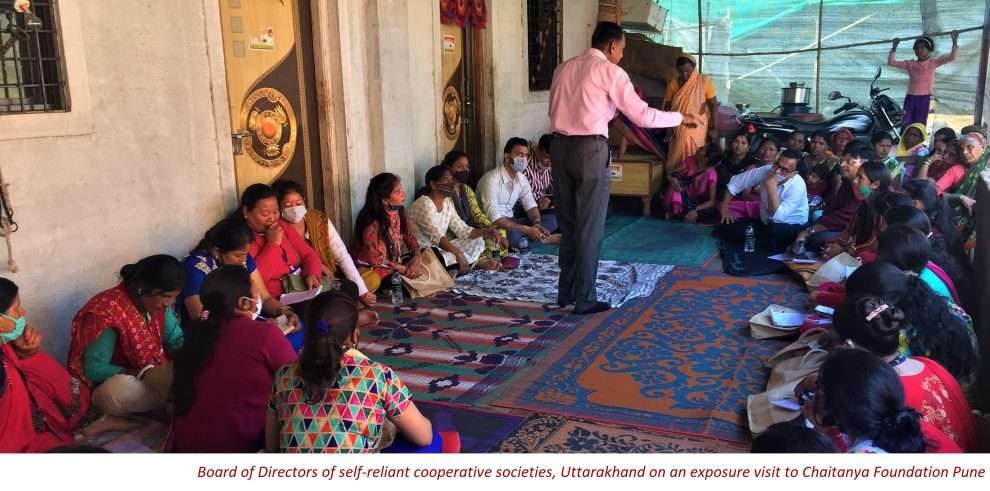

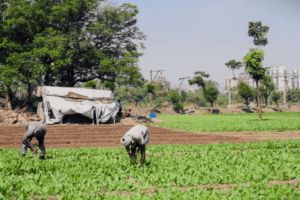

“The blog by Dr. Tripathy and Dr. Wadkar is helpful in understanding the various dimensions of social enterprises. i feel Extension scientists will definitely appreciate the concept and practice. There are two statements by the authors which need critical analysis by the extension scientists. They are:
1. Most of the social enterprises are struggling to achieve the purpose of their existence
2. As of now, the FPO movement is still in the nascent stage and the focus is on creating social capital rather than on making them competitive and sustainable.
How to motivate social entrepreneurs and how to make the FPOs sustainable are two major challenges facing extension personnel. I would like to define social enterprise as an enterprise run by an individual or organisation ‘for profit’, which has social and environmental relevance and creates social value. Corporates may run social enterprises as ‘not for profit’ for socio-economic development and welfare activities, as part of CSR (legally binding).
As the authors indicated in the blog, with the creation of a New Ministry of Co-operation, there is scope for PACS to run social enterprises. However, implementation of Vaidynathan committee report is viewed as a pre-condition, since the quality of management and other support mechanisms can be ensured.
I firmly believe that there is a need for proper hand holding and support from the Government for the sustainability of social enterprises. One of the major reasons for the success of Kudumbashree in Kerala and also the Uralungal Labour Contract Co-operative Society (ULCCS) Ltd functioning in Kerala is the patronage received from the State Government. Expecting to see more studies in the area of social enterprises and thanking the authors for the blog”
Well written article ….approaches for social enterprises formation may also one of the area to explore.